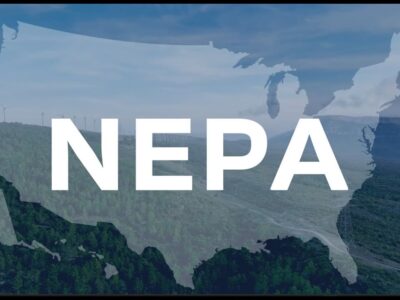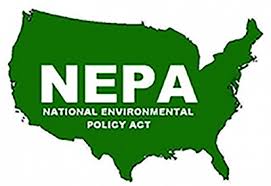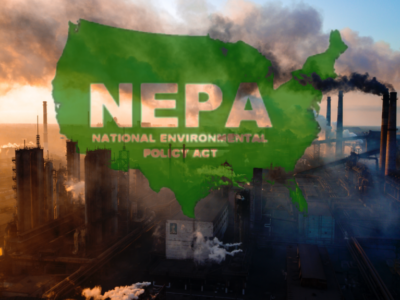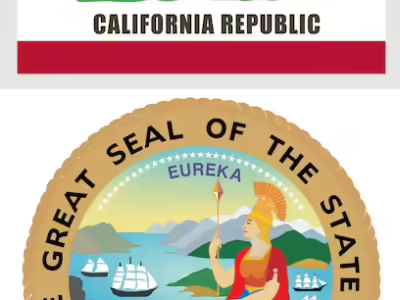Litigation
NEPA in the Supreme Court — On the Eve of Oral Argument
Some thoughts about how the Court should define some limits on indirect effects.
Our paper on the proper scope of NEPA places heavy emphasis on foreseeability, but in an expanded version of the paper we consider some unusual situations where additional factors come into play. This additional analysis makes clear important limits on NEPA scope that we think address at least some of the concerns that have (appropriately) been raised about ever-expanding NEPA review and the risk that it will hamper efforts to develop needed infrastructure.
CONTINUE READINGSix Things to Know about Rights of Nature
More than 500 Rights of Nature laws and policies have been passed globally. Here’s how to make sense of this nascent movement — or movements.
This Fall, I have been co-teaching a course on Rights of Nature with the historian Jill Lepore. This is the first time either of us have taught the subject and it has proven a wonderful opportunity to explore with our students this emerging movement — one that some have praised as “A Legal Revolution That …
Continue reading “Six Things to Know about Rights of Nature”
CONTINUE READINGNEPA and Loper Deference (Part II)
Guest contributor Justin Pidot outlines what losing CEQ’s NEPA authority means for interagency coordination and efficiency.
Dan provided a terrific overview of the legal issues involved in the D.C. Circuit’s recent decision holding that CEQ lacks authority to promulgate regulations and, therefore, that the regulations governing implementation of NEPA across the government for decades are ultra vires. I want to offer some additional observations focused on the potential practical implications. First, …
Continue reading “NEPA and Loper Deference (Part II)”
CONTINUE READINGNew This Thanksgiving: Toxic Turkey
Losing the farm to PFAS, or losing PFAS on the farm?
As Americans gather to celebrate the harvest’s bounty, there are few revelations about our food supply more distressing than the 2024 news that sewage-derived fertilizer has contaminated millions of acres of U.S. cropland with toxic PFAS chemicals. Marketed as “biosolids” that enhance soil productivity, the voluminous outputs from wastewater treatment plants have poisoned productive lands …
Continue reading “New This Thanksgiving: Toxic Turkey”
CONTINUE READINGNEPA and Loper Deference
The CEQ regulations will continue to receive deference. The question is how much.
The Supreme Court already has a NEPA case on its docket for next year. That should give the Court the chance to clarify Loper as well as the scope of CEQ’s authority.
CONTINUE READINGU.S. Energy Industry Trends To Watch In A 2025 Trump Presidency
New Trump administration policies will impact the energy industry, but maybe not in the ways Trump supporters expect, writes Guest Contributor Allan Marks.
Allan Marks is a partner at Milbank LLP and a lecturer at UC Berkeley School of Law and UCLA School of Law. This article was originally published in Forbes, for which he is a contributor, on November 7, 2024. When Donald Trump returns to the Oval Office in January 2025, his second presidency will have …
Continue reading “U.S. Energy Industry Trends To Watch In A 2025 Trump Presidency”
CONTINUE READINGNEPA in the Supreme Court (Part IV)
Understanding how causation applies for NEPA reviews.
This functional approach is consistent with Supreme Court precedent, based on the text and purposes of NEPA, and provides workable guidelines for agencies to determine what kinds of effects to examine when conducting environmental reviews. It is the approach the Court should follow when deciding Seven Counties, and when giving guidance to lower courts and agencies about how to apply NEPA.
CONTINUE READINGNEPA in the Supreme Court (Part II)
Here’s why the Supreme Court should reject radical arguments for limiting environmental impact statements.
Our last post explained the background of the Seven Counties NEPA case, which is currently pending in the Supreme Court. Today, we discuss the radical arguments that have been made in the case and why they should be rejected. NEPA requires that agencies consider the environmental effects of their projects, but the petitioners raise hairsplitting arguments to exclude obvious effects due to technicalities. Pleas for revising the law should be made to Congress, not to the Supreme Court.
CONTINUE READINGNEPA in the Supreme Court (Part I)
A pending case could mean radical retrenchment of a foundational environmental law.
In what could turn out to be another loss for environmental protection in the Supreme Court, the Court is about to decide a major case about the scope of the National Environmental Policy Act of 1969 (NEPA). The case, Seven County Infrastructure Coalition v. Eagle County, has important implications for issues such as whether NEPA covers climate change impacts.
CONTINUE READINGPresident-Elect Trump vs. California: What Lies Ahead?
Will It Be Environmental Law & Policy Deja Vu All Over Again? Or Even Worse?
Californians who care about the environment likely–and justifiably–feel whipsawed this week. Former President Trump (#45) has re-emerged as President-elect Trump (#47), interrupted by the intervening four years of the Biden-Harris presidential administration. (Actually, this presidential whipsaw has been going on for decades: think Bush Sr.-Clinton-Bush Jr.-Obama-Trump-Biden-Trump redux.) In general, California’s progressive environmental laws and policies …
Continue reading “President-Elect Trump vs. California: What Lies Ahead?”
CONTINUE READING









